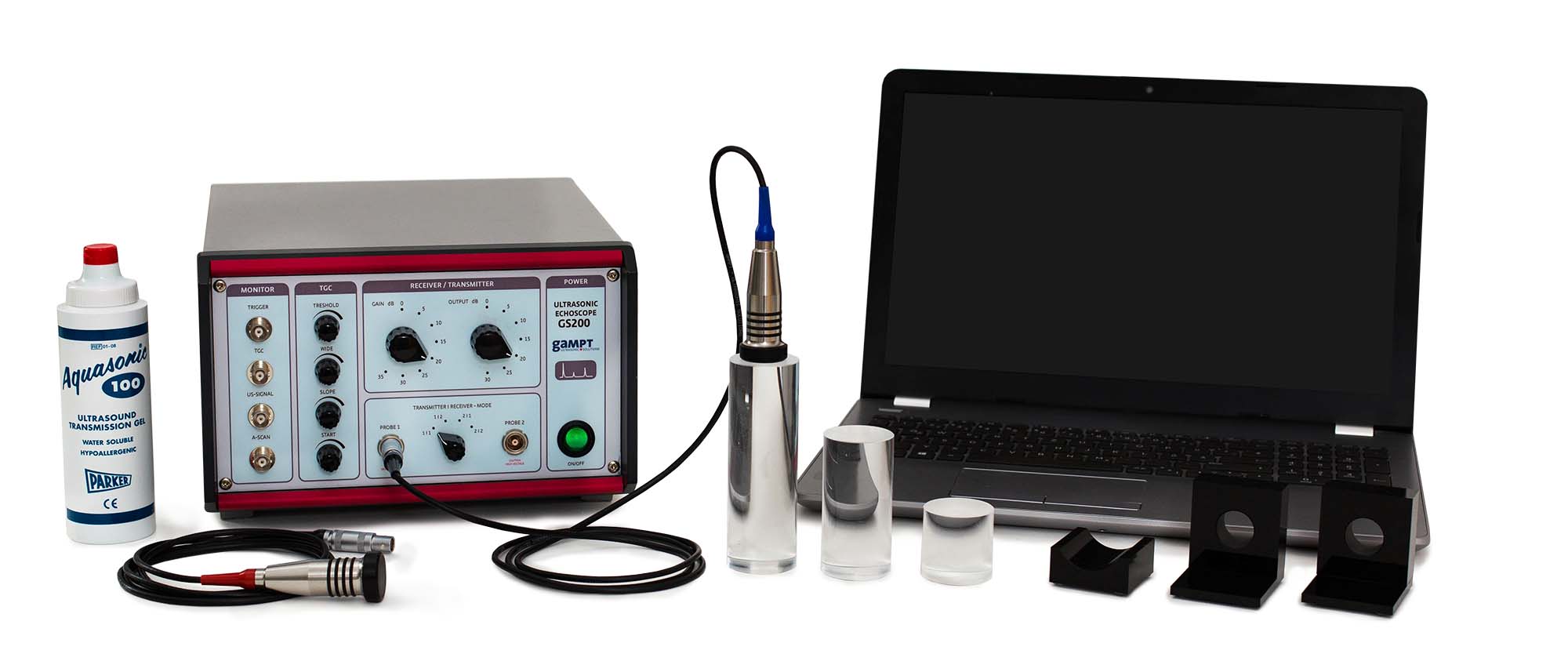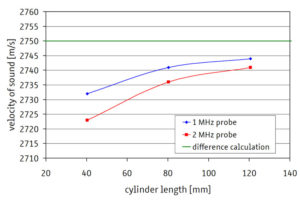Article No. VK-PHY02
PHY02 Sound velocity in solids
Determination of the longitudinal sound velocity in acrylic at two different sound frequencies
- Subject matter of the experiment
- Theoretical and practical aspects of the experiment
- Results
- Equipment
- Related Experiments
In the experiment, the longitudinal sound velocity in acrylic is to be examined and determined at two different sound frequencies. For this purpose, time of flight measurements are carried out according to the pulse echo method (ultrasonic A-Scan) at three acrylic cylinders of different lengths.
Keywords: Propagation of ultrasonic waves, characteristic acoustic impedance, reflection, time of flight, sound velocity, pulse echo method, ultrasonic A-Scan
Ultrasonic waves propagate in a medium with a material-dependent velocity, which can be frequency-dependent. In gases and liquids sound propagation only takes place in the form of longitudinal waves. In solids, on the other hand, due to their elastic properties, shear waves can also occur. Shear and longitudinal waves generally propagate at different velocity. The sound velocity of the longitudinal waves generated in a solid with perpendicular sound coupling can be simply determined by means of time of flight measurements using the pulse echo method. By using samples of different lengths and sound probes with different frequencies, the intention in the experiment is to make statements on the frequency dependence of the sound propagation and on sources of errors caused by the structure of the ultrasonic probes that are used.
The sound velocities calculated from the times of flight measured show a systematic error, the influence of which becomes smaller as the measuring length is increased, and which is caused by the time of flight also measured in the protection/adaption layer of the probes. In this case, the 2 MHz probe possesses a thicker protection/adaption layer so that the sound velocities determined with it show a greater error. Using a difference calculation from two measurements with different sample lengths, this error can be eliminated (green line in the graphic, cL = 2750 m/s, same values for both frequencies, no dispersion).
| Ord.no. | Description |
|---|---|
| 10400 | Ultrasonic echoscope GS200 |
| 10151 | Ultrasonic probe 1 MHz |
| 10152 | Ultrasonic probe 2 MHz |
| 10207 | Test cylinder set |
| 70200 | Ultrasonic gel |
| PHY07 | Shear waves in solids |
| IND01 | Non-Destructive Testing (NDT) |
| IND06 | Angle beam testing |
| MED04 | Biometry at the eye phantom |

